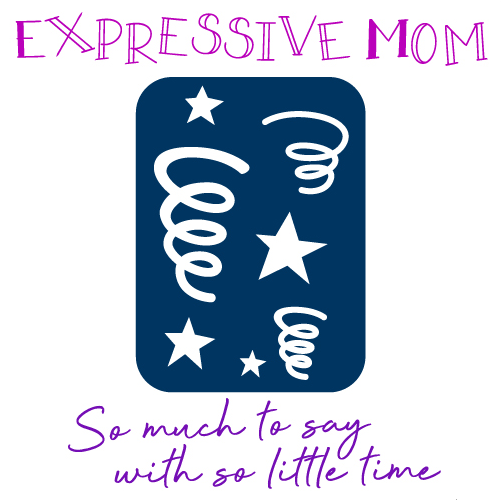Photo by Brett Sayles
The bond between a mother and child is a unique and precious relationship that plays a vital role in a child’s emotional, social, and cognitive development. Building a strong bond is essential for fostering a sense of security, trust, and connection. This comprehensive article will explore simple yet effective ways to strengthen the mother-child relationship. We will delve into the importance of bonding, the factors that influence it, and practical strategies to enhance this special connection. By implementing these techniques, mothers can cultivate a loving and nurturing environment, fostering a deep and lasting bond with their children.
Understanding the Importance of Bonding
The bond between a mother and child forms the foundation for healthy emotional development. It provides a sense of security, promotes positive self-esteem, and influences a child’s ability to form healthy relationships later in life. Bonding also contributes to a child’s cognitive and social development, fostering a sense of trust and exploration. Responsiveness, emotional attunement, and consistent care are crucial in building a strong bond with a child.
Practical Strategies for Building a Strong Mother-Child Bond
Building a strong mother-child bond can be challenging, but with the right strategies, mothers can foster an environment of trust and connection. Here are some practical tips for strengthening the mother-child relationship:
Responsive and Attuned Parenting:
- Engage in active listening: Show genuine interest in your child’s words and pay attention to their thoughts, feelings, and experiences. Be fully present in the moment and give them your undivided attention.
- Respond promptly and empathetically: Respond promptly and with empathy when your child seeks comfort or support. Validate their emotions and provide reassurance that you are there for them.
- Practice sensitivity and attunement: Be attuned to your child’s cues and signals. Notice their body language, facial expressions, and tone of voice to understand their needs better and respond accordingly.
- Foster open communication: Encourage your child to express themselves openly without fear of judgment. Create a safe space where they feel comfortable sharing their thoughts, concerns, and dreams. Respond with understanding and use supportive language.
Quality Time and Play:
- Set aside dedicated time: Prioritize one-on-one time with your child regularly. Create a schedule that allows for focused interactions, free from distractions. Use this time to engage in activities your child enjoys and promote bonding.
- Meaningful play activities: Engage in play that encourages bonding and connection. Participate in pretend play, puzzles, board games, or outdoor adventures. Follow your child’s lead, allowing their imagination to guide the play and create shared experiences.
- Interest in your child’s passions: Show genuine interest in your child’s hobbies and interests. Take time to learn about their favorite activities, books, or sports. Join them in their pursuits, whether playing a musical instrument together, attending a sports event, or engaging in a shared craft project.
Physical Affection and Comfort:
- Ample physical affection: Offer plenty of physical affection to your child. Hugs, cuddles, and gentle touch help convey love, warmth, and security. Physical touch releases oxytocin, the “bonding hormone,” and strengthens the emotional connection between you and your child.
- Comforting rituals: Establish comforting rituals that create a sense of security and strengthen your bond. For example, reading together before bedtime, having a special “goodnight” routine, or sharing family meals where everyone can connect and converse.
- Celebrating milestones: Celebrate your child’s milestones, no matter how small. Acknowledge their achievements and encourage them with words of affirmation. This helps build a strong and trusting bond between you and your child. You can do this by simply organizing a backyard party with bounce house rentals Sparks NV when your child has achieved a great milestone.
Emotional Regulation and Modeling:
- Safe space for emotional expression: Create an environment where your child feels safe expressing their emotions. Encourage them to communicate their feelings and validate their experiences. Teach them that it’s okay to express a wide range of emotions and help them navigate challenging emotions.
- Teach healthy coping skills: Guide your child in developing healthy coping strategies. Help them identify their emotions and provide them with tools to manage stress or frustration, such as deep breathing exercises, journaling, or engaging in physical activities that promote relaxation.
- Model emotional intelligence: Be a role model for your child by expressing and managing your emotions healthily. Demonstrate empathy, self-regulation, and effective problem-solving skills. Your child learns by observing and imitating your behavior, so practicing emotional intelligence sets a positive example.
Active Engagement in Daily Life:
- Involving your child: Include your child in daily activities and routines. Give them age-appropriate tasks and responsibilities, allowing them to contribute and feel like valued members of the family. Whether it’s cooking, cleaning, or running errands, make these activities fun and engaging by involving your child.
- Shared responsibilities and collaboration: Foster teamwork by working with your child to accomplish tasks. This promotes a feeling of togetherness and strengthens the bond between you. Engage in conversations during these activities, allowing for quality time and connection.
Positive Discipline and Boundaries:
- Clear and age-appropriate boundaries: Set boundaries that align with your child’s age and developmental stage. Consistently communicate these boundaries, helping your child understand expectations and the consequences of their actions. Boundaries provide structure and security, allowing for healthy growth and development.
- Teaching through guidance: Use discipline to teach and guide your child’s behavior. Focus on positive reinforcement, praising and acknowledging their efforts and achievements. Redirect their behavior when necessary, offering alternative choices or solutions.
- Building a nurturing relationship: Discipline should always be approached with love and respect. Avoid harsh punishments or yelling, as these can damage the mother-child relationship. Instead, focus on fostering a nurturing connection while teaching your child appropriate behavior.
Communication and Empathy:
- Open and honest communication: Create a safe space for your child to express themselves openly. Listen attentively and non-judgmentally, allowing them to share their thoughts, concerns, and experiences. Respond with empathy and understanding, validating their emotions.
- Reflective listening: Practice reflective listening, which involves paraphrasing and summarizing your child’s statements to ensure you understand their perspective correctly. This demonstrates that you value their thoughts and feelings, deepening your bond.
- Empathy and validation: Show empathy by putting yourself in your child’s shoes and trying to understand their experiences and emotions. Validate their feelings, letting them know it’s okay to feel a certain way. Offer comfort and reassurance when they face challenges or difficult situations.
Self-Care and Emotional Well-being:
- Prioritizing self-care: Take care of your own emotional well-being to ensure you have the energy, patience, and emotional balance to nurture your child. Prioritize activities that recharge you, such as exercise, hobbies, spending time with friends, or engaging in relaxation techniques like meditation or deep breathing exercises.
- Seeking support when needed: Recognize that you can’t do everything alone. Contact family members, friends, or support groups for assistance, advice, or simply to vent. Consider seeking professional help if you’re feeling overwhelmed, as meeting your emotional needs positively impacts the mother-child relationship.
Reflection and Growth:
- Self-reflection and evaluation: Engage in regular self-reflection, examining your own parenting style, strengths, and areas for improvement. Consider how your actions and behaviors impact the mother-child bond, and be open to adjusting your approach as needed.
- Continuous learning: Stay informed about child development and effective parenting strategies through books, articles, or workshops. Continuously educate yourself to gain new insights and tools for strengthening the mother-child bond.
Unconditional Love and Acceptance:
- Expressing unconditional love: Let your child know your love for them is unwavering and unconditional. Reassure them that you will support and love them no matter their challenges or mistakes.
- Celebrating individuality: Embrace and celebrate your child’s individuality. Encourage them to explore their interests and passions, supporting them in pursuing their own unique path. Avoid comparisons and instead focus on nurturing their strengths and talents.
Building a strong mother-child bond requires time, effort, and a commitment to nurturing the relationship. By implementing the practical strategies outlined above, you can create a loving and secure environment that fosters a deep and lasting connection with your child. Remember that every child is unique, so adapt these strategies to suit your child’s needs and preferences. The bond you cultivate will provide a strong foundation for their emotional well-being and create a lasting legacy of love and support throughout their lives.



Connect With Me !